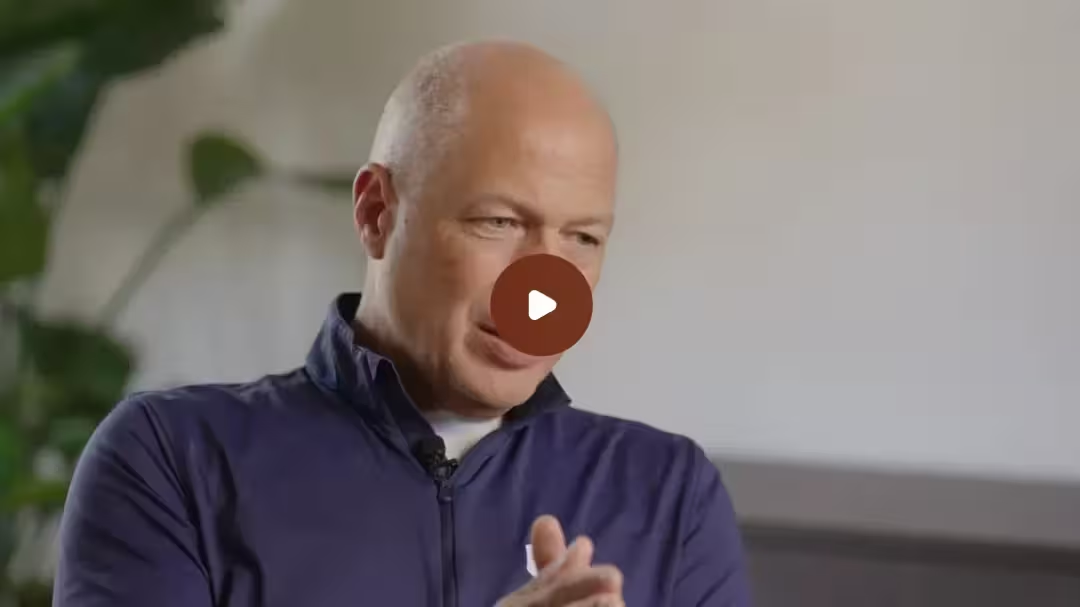
From recruitment to sales ops, Rebecca Silverstein discovered a passion for tech, optimisation and working smarter, and did what she could to turn that passion into her dream job. Having joined Smartling as an SDR, she's now running her own team as Manager of Sales Operations. I was keen to find out more about her journey. We discussed where to focus first in a new sales ops role, how Rebecca has built out a sales tech stack and how to create a successful onboarding process. After hearing about Rebecca's transition into sales operations, the interview began...
Rory Brown (RB): Canyou tell us about Rebecca Silverstein and your career to date?
Rebecca Silverstein (RS): I studied Finance at college andupon finishing my degree, started a career in recruiting. It wasn’t somethinganyone saw coming (including myself!) and eventually I realised it wasn’t wheremy interests lay. During my time as a recruiter, I spoke to a lot of people intech companies, which sparked my interest in that area.
I had seen lots of transitions from recruitment into salesdevelopment, so I started applying for business development and salesdevelopment representative positions at tech companies to get a foot in thedoor.
That is how I started at Smartling and during my first yearthere, I discovered a passion for optimisation and working smarter, and I wouldtake on additional projects to gain more experience.
During that time, I worked on a project for the Sales Director that involved scaling outbound email campaigns for the sales team. After that, I transferred to sales operations.
My first year in sales operationsinvolved a lot of self-learning – teaching myself Salesforce, creating reportsfor the sales team and taking on the administration of some of our tools. Myrole started to expand when our current VP of Sales joined Smartling at thebeginning of 2018. He had experience in running a sales operations team, so wewere able to ramp up our efforts by re-tooling the entire sales tech stack andcreating new processes. At that time, I also got my Salesforce Administratorcertification.
In July, I was promoted to managethe Sales Operations team, which at the time was myself and one otherindividual. I now administer the CRM for the whole organisation, own thetooling and process for the sales team, and manage our team of (now) three.
RB: Perfect. That’s a nice place to start the interview. You are justover two years into sales ops now. Whatdo you know now that you wish you had known when you first started?
RS: One thing I have learnt isthat people aren’t always going to ask for things because they don’t know whatto ask for. A lot of the value that I’mtrying to deliver is finding things that other people might not be thinkingabout, or listening to what people are saying and trying to pull out what isimportant.
Another thing that I wish I hadknown is that more often than not, others are dealing with the same or similarissues that I am. I have made connections and formed a network with people insales operations across different companies of a similar size, and it seemslike a lot of the challenges that I thought were unique to Smartling are notand I’ve learnt that there is a lot of value in speaking with people who havedone similar things before and discussing ideas for improvement.
RB: That is really good. Let’s focus in on your initial learning offinding additional value that people aren’t thinking about. Where does onebegin with that? How do you identify an area, let’s say of the sales funnel,where you might want to create additional value?
RS: It’s natural for people tobecome very focused on their teams and specifically the people that report tothem. But with a broader scope and understanding those metrics, there isopportunity to look outside and investigate what might be causing this or howit compares to other teams in the business.
RB: Have you mastered a tactful way of presenting insights that could puta sales leader and their team in a bad light?
RS: It’s alwayschallenging to deliver feedback and potentially bad news. But what I havelearnt, and am still working on, is to frame it as “This is where we are at; weare all on the same page here and we might have an opportunity to improve.”It’s more tactful than pointing the finger and blaming. Having a solution, orat least the ability to spark a conversation framed around what the end resultis, can result in a more positive conversation.
RB: You were in the position of being the first sales operations leaderat Smartling. What drove the need for a sales operations function and what wasthe first thing that that function tackled in the business? I think there are alot of people reading our resources who are in that position.
RS: For me, the initialmove was driven by that scale and outreach initiative I had taken on.
In terms of where to startfirst, from my experience as an SDR, I knew the biggest blocker in the SDRworkflow was we were spending a lot of time researching better accounts towork.
That was something I hadpersonal experience with, so I focused on that first. I think it’s important tostart by focusing on something you already have experience of or you know is aproblem, and get some quick wins. That will then immediately prove your valueto the team and other stakeholders.
RB: So your experience as an SDR naturally led you to start with thatissue. Were there any thoughts about the commercial impact or numbers thatmight be impacted if you were to fix this issue? Or was it more of a theory youwanted to test?
RS: I initially sent out asurvey to the SDRs to get an understanding of what they were spending the mosttime on, with the idea that if we could eliminate time on non-essentialactivities, we could then re-allocate that time for more outreach.
So, everything else beingequal, the theory was that we would be able to increase the amount of outreachby X number of hours that we gave back by eliminating some research time.
RB: Yes, fantastic. Moving onto the topic of technology. It would beinteresting to understand what your current tech stack looks like and how itimproves the efficiency of your sales funnel, from the moment an SDR picks upan inbound lead or creates an outbound lead right through to close.
RS: I will choose a couple of tools to focus on. Several years ago, we implemented Chorus, which is a conversation intelligence platform. It enables reps to focus on taking their calls and then be able to look back, comment and share key moments and insights from those calls, and solicit coaching from management.
So that is something thatis both a tool and a process update that we made.
And then the other tool I’d like to mention is Salesloft. We implemented this a year ago for the sales development team and we have since seen 5X, 10X in activity across the team.
RB: Brilliant. Let’s take a deeper look at Salesloft. How did you arrive at the point where you knew you needed to invest in technology, rather than make better use of what you already had? How did that decision come about?
RS: Our VP of Sales camefrom an organisation that saw success with an outbound cadencing tool. When he started we were keen to channel thatsuccess and alleviate some of the SDR team’s manual efforts, namely spending alot of time keeping track of who they are reaching out to. Our hypothesis wasthat this tool would help organise their days better, whilst keeping themfocused and accountable on their activities.
We leveraged our networkwith other organisations and concluded that there are just a handful of playersin this space that sit in this category. Those are the tools we focused onevaluating.
RB: How do you identify areas that you need to invest in and bring newtechnology to?
RS: In the past, weidentified the key categories in which a tool or a vendor would be able to freeup time for the team. Sometimes there is an event that brings one of thesecategories to our attention and then we get a conversation going with the team,asking how much time they spend on X and assessing whether there is a betterway to get the task done. I take calls with vendors in various spaces tounderstand what is available, who the leaders are, and generally keep an eye onwhat is new to the market.
RB: So for you it is all about enabling people, freeing them up to dowhat they do.
RS: Yes exactly, that’s ahuge part of it.
RB: Nice. It would be great to talk about the rolling out of newtechnology. If we start from the very beginning from getting people bought-into the fact that we are about to invest in something new, all the way throughto making it stick during the onboarding process.
RS: One of our more successfulrollouts was Salesloft so I’ll use this example.
We chose Salesloft as avendor particularly because we saw them as a great opportunity for partnership.Our sales rep flew in from Atlanta to New York for three days to sit with ourSales Development Team and answer any questions that they had. This was a hugehelp, particularly for those who were not going to be in the tool every day. Hewas able to help with the implementation greatly, and we also really tried todrive home how much this tool would help them hit their quotas.
It’s important that theyunderstand the benefit and why we are spending time on certain things and notothers.
RB: There’s often a lot to think about when you set up a new tool interms of syncing it with Salesforce, new workflows etc.
How do you approach that?
RS: Simple is best, but atthe same time I try to have everything as built out and robust as possible forthe initial rollout, so that there aren’t a lot of updates I need to make andcommunicate to the team over time. Going back to Salesloft, we had an idea ofwhat we wanted to use it for and I consulted with the implementation team thereto understand best practices and ask questions, and then I tried to make mybest judgement as to how this would fit into our process.
Again, in the interest ofnot having to constantly send updates to your team, I recommend trying to haveit as prepared as possible for the initial rollout.
RB: Presumably, if you spot something you think needs improving ortechnology, your first port of call would be to talk to the person you reportinto, the VP of Sales in your case?
RS: Yes, exactly.
RB: Then when it comes to actually finding the right vendors, I presumethat is then your duty?
RS: Yes. Sometimes peoplecome to me with recommendations, or there might be SDRs reaching out todifferent people, so I will instruct someone on my team (more often than not,me) to take a call with them. And then we would go through their feedback andmake a decision based on what is unique to each vendor and their pricing. ThenI would have a conversation with my manager, the VP of sales and come to aconsensus.
RB: You obviously speak to a lot of different vendors. In yourexperience, what makes a good vendor to partner with?
RS: Some of thecommonalities that I have found to be most important to me are whether they aregoing to be a partner who is easy to work with, who will be able to answerquestions, and be able to speak to specific issues. Are they there to supportus when we have a question? Are they ableto easily resolve things? Can the tooldo what they said it would do?
RB: Would you say you might sacrifice shiny gadgets or functionalityfor the one that is more likely to make it a more pleasant seamless experience?
RS: We think about ournon-negotiables. And if they check those boxes, then it would probably bedeciding between who we believe has a better roadmap and would be a moresuccessful partner long term. But if they are not ticking the basic boxes,regardless of whether they have the nicest team in the world, it is probablynot going to be a good fit.
RB: That is a good point. What advice do you have for new sales opsleaders who have been given the responsibility to find new technology andvendors. How should they approach that?
RS: First of all, youshould consider at a really high-level what you need this tool to do. And thenfrom there, breaking it down and saying, so that means that we definitely needX, we definitely need Y, we definitely need Z. And then look at the featuresand benefits on G2Crowd or similar rating providers. But keep in mind you don’twant to just see the Best of the Best, you just need the best fit for you.
Then it’s about goingthrough your criteria checklist and looking at all the vendors who have metthat criteria.
RB: How would you describe the relationship between a sales ops leaderand sales leader, how they depend and rely on each other?
RS: I think that the morealigned you are, the more effective you can be. Having an understanding that weare looking to achieve the same thing - more revenue - and really focusing onwhat is going to have the biggest impact on that is really important. It’s alsoimportant to understand their role and their point of view-- for example, at the end of the year, the sales leader willlikely be on closing out deals. And it’s probably not the best time to talkabout purchasing a new tool.
And then also asking howyou can help. As opposed to, “Here are all the things I want to do”, theconversation should be, “What is the biggest problem that you think we shouldtackle?” Alignment is really important.
RB: I like that a lot. The next question is an interesting one, and I’ve had quite a few different answers on this. How do we measure success in a sales ops role or team? What have you experienced there?
RS: I would love to hearwhat other people answer for this, because everyone I speak with says we arevery metrics driven, but oftentimes it is very difficult to quantify salesoperations performance.
So I would say that whatwe try to do is divide things into projects using OKRs: This is our objective,this is what the result looks like and these are the things that we need to doto get there in this time period. I know that some people also use a form ofNPS score to understand if their work is actually making an impact on the team.It’s always good to ask whether the work we do is helpful and what we couldhave done better.
RB: I like that a lot.
Want to get more insights from sales ops leaders? Check out our other posts in the sales ops interview series.
At Kluster, we're big fans of sales operations...
We recognise the growing importance of sales operations. No longer seen as the function that provides spreadsheets, sales operations is integral to building a repeatable, scalable sales machine.
That's why we built Kluster. We make analytics and forecasting systems for you so you can spend time doing what you do best: uncovering trends and delivering growth defining insights.
Kluster gives you total visibility into the effectiveness of your sales machine and helps you generate credible forecasts to revenue leaders and the board.


.svg)
.svg)
.svg)
.svg)










